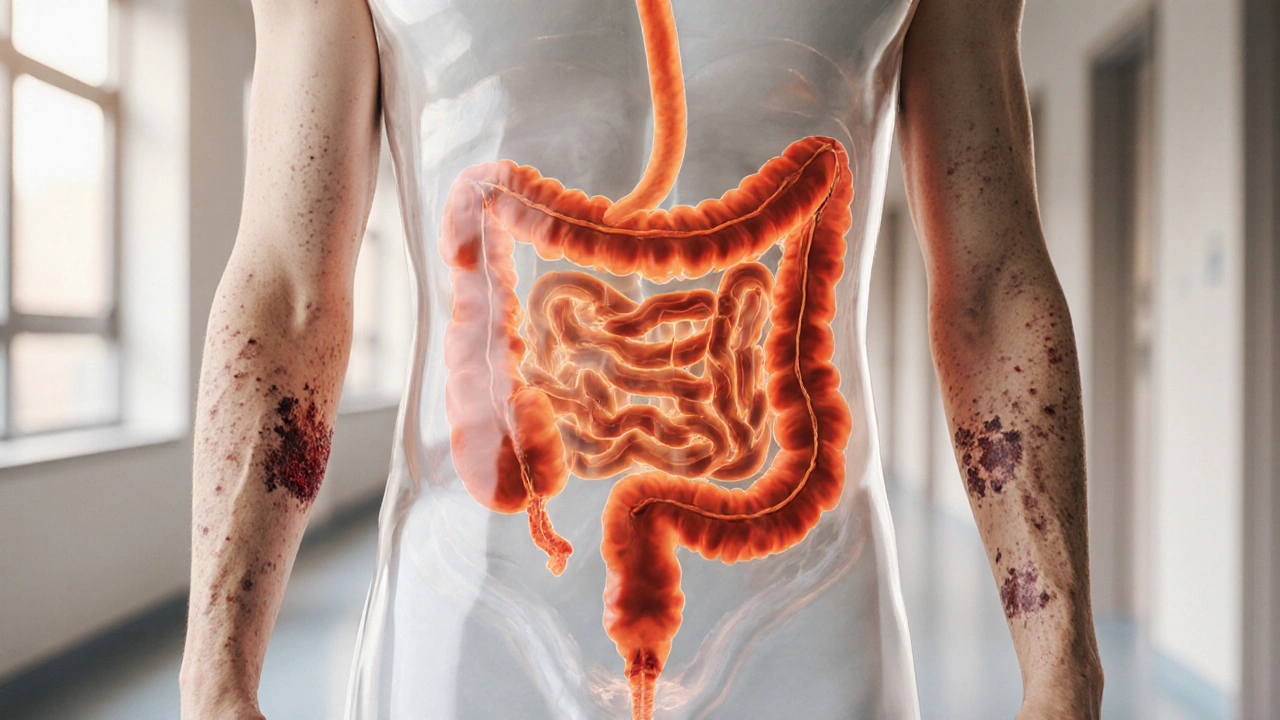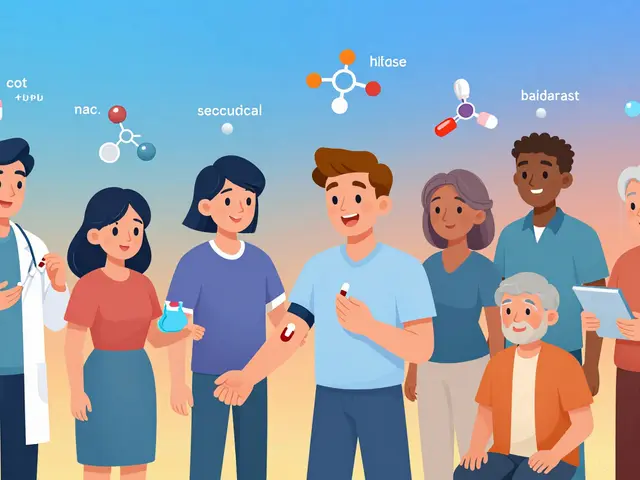Skin Symptoms of Ulcerative Colitis
When dealing with skin symptoms ulcerative colitis, the skin changes that appear in people with ulcerative colitis. Also known as cutaneous extraintestinal manifestations, they signal that inflammation is affecting more than just the gut.
Ulcerative colitis itself is a chronic inflammatory bowel disease that primarily targets the colon. It encompasses a range of extraintestinal manifestations, meaning symptoms can show up in the eyes, joints, and skin. The skin side of the story brings in entities like erythema nodosum, pyoderma gangrenosum, and aphthous ulcers, each with its own pattern and severity. Understanding how ulcerative colitis, a long‑lasting inflammation of the colon lining triggers these lesions helps patients and clinicians catch problems early.
Common Skin Manifestations
Extraintestinal manifestations act as a bridge between gut inflammation and skin response. Extraintestinal manifestations, symptoms that occur outside the intestines in ulcerative colitis patients often include painful nodules on the shins (erythema nodosum) and rapidly enlarging ulcers on the legs (pyoderma gangrenosum). Erythema nodosum appears as tender, red lumps that usually fade over weeks, while pyoderma gangrenosum can start as a small pustule and turn into a deep, necrotic wound if left untreated.
Other skin lesions, such as livedo reticularis or purpura, may signal vascular involvement. These signs require a different diagnostic approach because they can mimic infections or drug reactions. Recognizing the pattern—whether the lesions are nodular, ulcerative, or vasculitic—helps narrow down the underlying cause and guides therapy choices.
Treatment of skin symptoms often mirrors the management of the gut disease. Immunosuppressants like azathioprine, biologics targeting TNF‑α (e.g., infliximab), and corticosteroids are the mainstay. When the skin issue is the first warning sign, doctors may start systemic therapy even before a severe bowel flare. This approach reduces the risk of chronic skin damage and improves overall quality of life.
Lifestyle factors also play a role. Smoking can worsen pyoderma gangrenosum, while a balanced diet rich in omega‑3 fatty acids may ease inflammatory skin responses. Patients often find that keeping a symptom diary—tracking bowel movements, skin changes, and stress levels—helps identify triggers and fine‑tune medication doses.
In practice, a multidisciplinary team works best. Gastroenterologists handle the colon inflammation, dermatologists focus on skin biopsies and wound care, and rheumatologists may join if joint pain is present. This collaboration ensures that each manifestation gets the right attention, preventing misdiagnosis and unnecessary antibiotics.
Below you’ll find a curated set of articles that break down each skin condition, explain how ulcerative colitis drives them, and offer practical tips on diagnosis and treatment. Dive in to get the specifics you need for managing these tricky extraintestinal symptoms.
Explore why ulcerative colitis often triggers skin issues like pyoderma gangrenosum and psoriasis, learn the immune link, and get practical tips for treatment and care.



